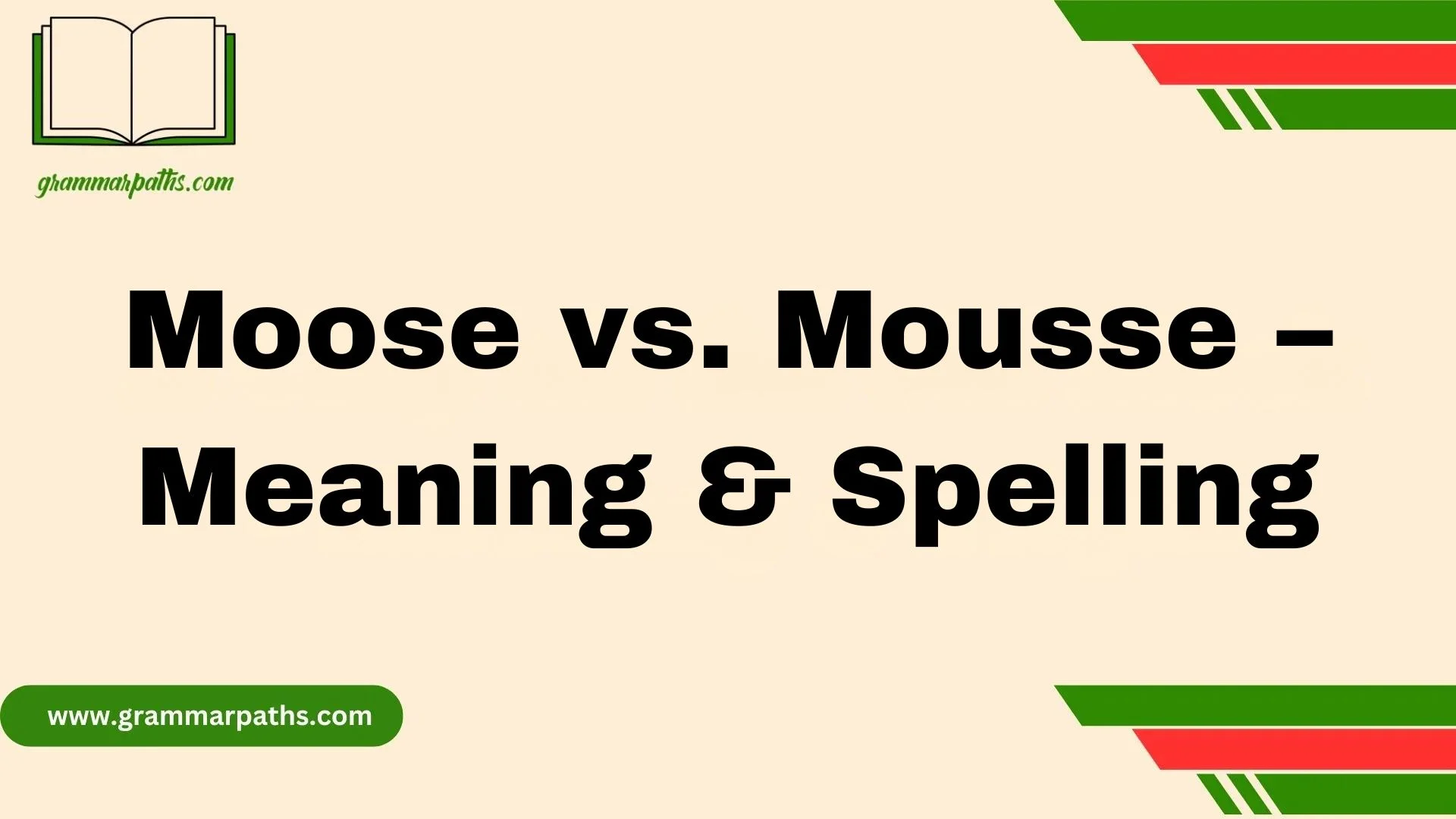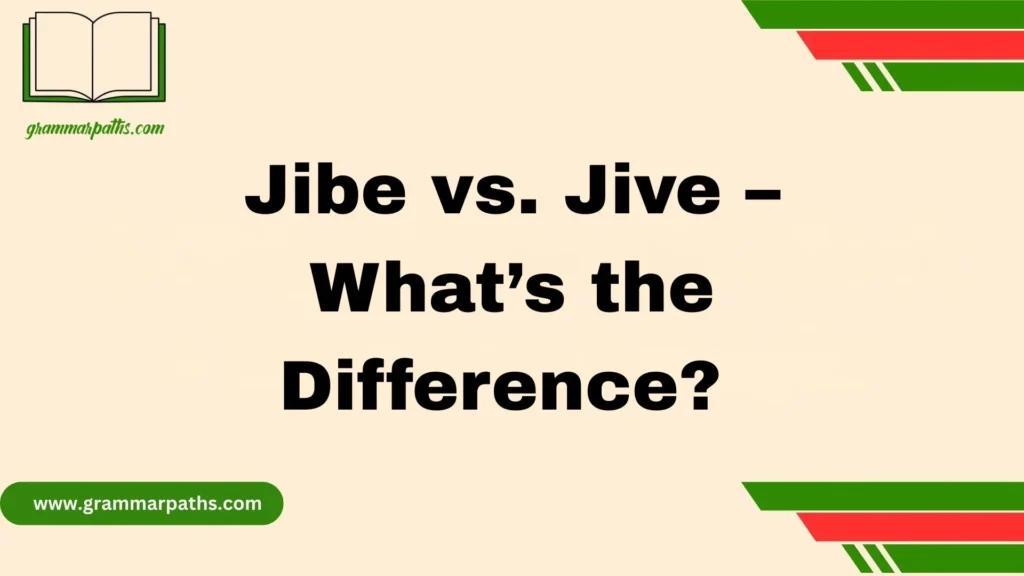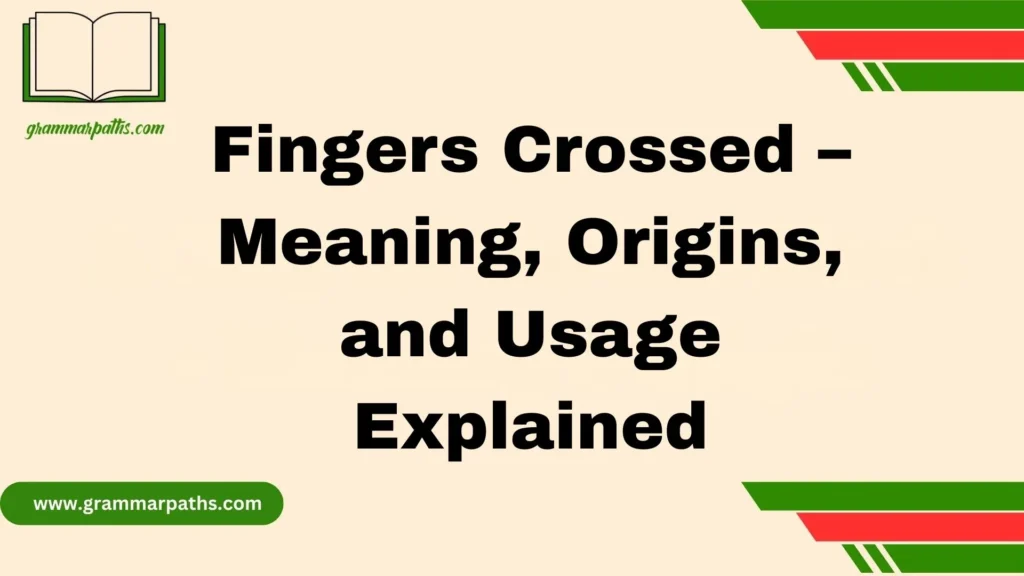When I first encountered the phrase Moose vs. Mousse – Meaning & Spelling, I had to laugh—how can two identical–sounding words have such different meanings? One is a wild, majestic animal with antlers, often found in forests of Canada, Alaska, Europe, and Asia, while the other is a creamy, light, and frothy dessert, sometimes chocolate, sometimes savory, and also a hair styling product. These are homophones, and they’re funny, a bit tricky, and can easily confuse even native speakers, especially when spelling and usage come into play. The pronunciation may be the same, but the meanings are truly opposite.
I’ve seen students struggle to write a correct sentence using “moose” or “mousse.” They’d apply the wrong word just because it sounds right. But here’s a tip: remember the style and texture of a whipped, soft mousse when thinking of the dessert or hair product, and think of the herbivore species and its plural form, still “moose,” when picturing the animal. The difference is more than spelling—it’s a whole conceptual shift.
What Are Homophones, and Why Do They Confuse Us?
Homophones are words that sound the same but are spelled differently and have different meanings. English is full of them.
Common Homophone Examples:
- Flour and flower
- Write and right
- To, two, and too
- Bear and bare
So, when it comes to moose and mousse, the confusion is natural. They sound identical but belong in totally different conversations—one in the woods, the other in your kitchen or bathroom.
What Is a Moose?
Definition and Origin
A moose is the largest member of the deer family. It’s a huge, wild animal with long legs, a bulky body, and large, flat antlers (on males). You’ll find moose mostly in North America, especially in Alaska, Canada, and the northern parts of the United States.
- Scientific name: Alces alces
- Average height at shoulder: 5 to 6.5 feet (1.5 to 2 meters)
- Average weight: 800 to 1,600 pounds (360 to 725 kg)
- Lifespan: 15 to 25 years
- Plural: Moose (not mooses!)
The word “moose” comes from Eastern Canadian Indigenous languages, specifically Algonquian, meaning “twig eater.”
Key Facts About Moose:
- Only males grow antlers, which they shed and regrow yearly.
- Moose are solitary animals and prefer cool, wooded areas with access to water.
- They’re excellent swimmers and can run up to 35 mph.
Example Sentences with “Moose”:
- A moose wandered across the road just as we were driving into the park.
- The moose’s antlers spread over six feet wide!
- Did you know a group of moose is still called “moose”?
What Is a Mousse?
Definition and Origin
A mousse is something entirely different. It’s a light, creamy dish—usually a dessert—or a foam-like styling product for your hair. The word comes from French, where it literally means “foam.”
- Pronunciation: /mo͞os/ (same as “moose”)
- Plural: Mousses
Types of Mousse:
- Food Mousse
- Typically made with whipped cream, eggs, chocolate, or fruit.
- Served cold, often in individual cups or bowls.
- Light, airy texture from whipped ingredients.
- Typically made with whipped cream, eggs, chocolate, or fruit.
- Hair Mousse
- A foamy hair product used for styling.
- Adds volume, shine, and definition.
- Common in both men’s and women’s hair routines.
- A foamy hair product used for styling.
Nutritional Snapshot: Chocolate Mousse (1 cup)
| Nutrient | Amount |
| Calories | ~360 |
| Fat | ~25g |
| Sugar | ~30g |
| Protein | ~6g |
Example Sentences with “Mousse”:
- I made a dark chocolate mousse for dessert—it was so smooth and rich.
- She used a curling mousse before styling her hair.
- This mousse recipe only takes five ingredients and 10 minutes to prepare.
Moose vs. Mousse – Side-by-Side Comparison
Let’s clear things up with a quick comparison:
| Feature | Moose | Mousse |
| Part of Speech | Noun | Noun |
| Meaning | Large animal | Dessert or hair product |
| Pronunciation | /mo͞os/ | /mo͞os/ |
| Spelling | M-O-O-S-E | M-O-U-S-S-E |
| Plural | Moose | Mousses |
| Origin | Algonquian (Indigenous) | French |
| Common Usage | Nature, wildlife | Food and beauty |
| Example | The moose ran through the woods. | The chocolate mousse was divine. |
Common Mistakes: Why People Mix Them Up
Same Sound, Different Spelling
This is the biggest reason people get tripped up. You hear “moose,” and your brain doesn’t know which one someone means unless you have context.
Real-Life Examples
“I thought he brought home a mousse from the woods. Turns out, it was a mousse cake!”
— Comment on Reddit
“She posted a pic of her hair and said ‘used chocolate moose today.’ Took me a second!”
— Twitter user
Autocorrect Fails
Even smart phones don’t always catch the difference. If you’re typing fast, your phone might “correct” mousse to moose or vice versa, depending on which word it thinks fits best.
How to Remember the Difference: Simple Memory Tricks
Use These Tips:
- Moose = Animal
Think of the “e” at the end like antlers extending out. - Mousse = Dessert or Foam
Two “s” letters = Sugar & Style.
Rhyming Clues:
- A moose on the loose is not a mousse in your mousse.
- Don’t serve a moose with whipped cream—it’s mousse you want!
Visual Associations:
- Moose → Forest, wilderness, antlers, Alaska
- Mousse → Dessert bowls, chocolate swirls, hair styling bottles
You could even create flashcards or use an app like Quizlet if you’re learning English as a second language.
Real-Life Examples: Where You’ll See or Use Each Word
In School
- Spelling tests or vocabulary worksheets often feature homophones like moose/mousse.
- ESL (English as a Second Language) learners often encounter these in grammar lessons.
On Menus and Product Labels
- “Triple Chocolate Mousse” on dessert menus
- “Curl-Defining Mousse” on haircare shelves at Walmart or Target
On TV, Memes, and Social Media
- Moose frequently appear in shows like Alone, National Geographic, and Letterkenny
- Mousse recipes go viral on platforms like TikTok and Pinterest
Final Thoughts – Never Mix Them Up Again
The words moose and mousse may sound the same, but their spelling, usage, and meanings couldn’t be more different. Whether you’re describing a majestic animal wandering the forests of Canada or enjoying a light, creamy dessert, it’s important to understand the context. These homophones are a great example of how English can be funny, a bit tricky, and beautifully complex. So next time you hear or write one of them, think carefully—and you’ll never confuse your moose with your mousse again.
FAQ – Moose vs. Mousse
What is the main difference between moose and mousse?
The main difference is in meaning and usage: a moose is a large animal found in forests, while mousse is a creamy dessert or a hair product.
Are moose and mousse pronounced the same?
Yes, moose and mousse are homophones, meaning they are pronounced the same but have different meanings and spellings.
Is the plural of moose “mooses” or “meese”?
Neither. The correct plural of moose is just moose. It stays the same whether singular or plural.
What are the different types of mousse?
Mousse can be either sweet (like chocolate mousse) or savory, and it can also refer to styling products used for hair.
Why do people confuse moose and mousse?
People often confuse these words because they sound identical, but they represent opposite concepts. This makes them tricky, especially for English learners.
Bonus Cheat Sheet
| Word | Meaning | Memory Tip |
| Moose | Big animal with antlers | “E” = antlers (animal) |
| Mousse | Fluffy dessert or hair foam | “SS” = Sugar + Style |

Emma Brooke is a passionate language expert and contributor at GrammarPaths.com, where she helps learners navigate the complexities of English grammar, idioms, and effective writing. With a strong academic background and years of teaching experience, Emma excels at turning tricky grammar rules into simple, practical lessons that readers can easily grasp.












